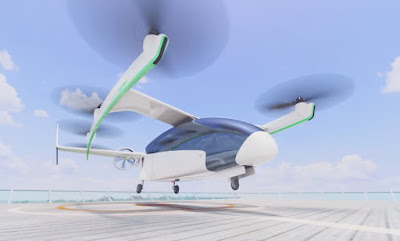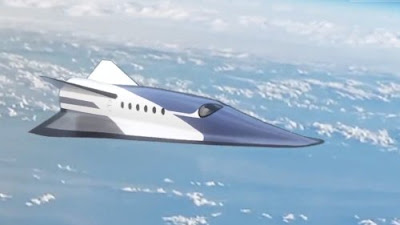Honda, a Global Innovation Incubator Center
Japanese Automaker Investing $45 B in R&D
Sources: Honda. Space image NASA
Focus: Robots, Rockets & Flying Taxis
Honda is expanding into new forms of mobility and significantly increasing its R&D spending on 3, highly innovative and disruptive business lines: robots, rockets and flying taxis or eVTOLS. The Japanese based auto giant is investing $45 billion in R&D money over the next 6 years. Interestingly, Honda as a mobility company sees the 3 areas as an extension of and synergistic with its primary business of making cars. They say that the research and development efforts could lead to a greatly advanced electric vehicle platform, among other new technologies. Honda's strategy is to create prototype robots, rockets and eVTOLs to determine if the products are viable for successful commercial market development.
Robotics
Honda is a pioneer in robotics. It created Asimo which was one of the world's first robots to walk. Currently, the primary focus is to develop a robot with multi-fingered hands, capable of picking up and grasping objects. Honda envisions a human operator directing the robot remotely by wearing a VR visor and connected glove. Honda is also developing Avatar robots with digital faces to enable people to remotely attend meetings and even work and interact with physical objects. The new robotic technology would allow people to work from wherever they want to be situated, while being totally interactive, real-time participants, as if they were physically there.
Reusable Rockets
Honda is building on its expertise in propulsion, guidance and control technologies to develop small, reusable rockets. They want to use the rockets to launch small, low orbit satellites to provide various services including connectivity. This business line is being hotly pursued and deployed by Elon Musk's Space X Starlink satellite system and also is in development by Amazon's Jeff Bezos' Blue Origin space company.
Flying Taxis
As a mobility company, Honda is also focused on the development of eVTOLs or flying taxis/flying cars. Unlike many other urban air mobility vehicle creators, Honda is not going fully electric with their eVTOL because of the limited ranges that electric technology currently can present. Honda is developing a hybrid-electric vehicle using gas turbines to supplement the hybrid electric motor to produce a 250 mile range. This potentially is a very big business line for Honda. The company says it will decide before 2025 whether to take the flying taxi business commercial and have it operational by 2030. To take a look at my many books on new concept vehicle, robots and space exploration, go to https://read.amazon.com/kp/embed?asin=B08PS8F3NF&preview=newtab&linkCode=kpe&ref_=cm_sw_r_kb_dp_NJ6DTMVDR17B5W0EJQ4M






Comments
Post a Comment